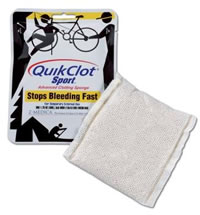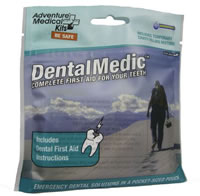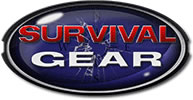Layered First Aid Kits
<--Page 1 - First Aid Kits - A Layered Approach
From there, you move on to the more comprehensive kits designed for long-term use. These would be the types of kits you'd have at home for extended emergencies or to put in your pack for camping trips where your party will be well away from civilization. A comprehensive first aid kit like this should have all the items previously mentioned but in greater quantities as well as CPR masks, splints, trauma pads, and oral rehydration salts. At this level, you should also consider more intensive gear like surgical equipment, injection gear, and IV set ups. When you're days away from medical treatment, that's not the best time to try and figure out how to best close a gaping wound using fishing line, duct tape, or super glue.
Layered First Aid Kits
 QuikClot pads should be included in all first aid kits. This is a product that allows for rapid clotting for major wounds. Basically, it sucks in all the water content in the blood, leaving behind the platelets that facilitate clotting. The pad is secured over the wound and kept in place until the patient arrives at the emergency room or other medical facility. This is a great product and can be of substantial help.
QuikClot pads should be included in all first aid kits. This is a product that allows for rapid clotting for major wounds. Basically, it sucks in all the water content in the blood, leaving behind the platelets that facilitate clotting. The pad is secured over the wound and kept in place until the patient arrives at the emergency room or other medical facility. This is a great product and can be of substantial help.
Don't forget dental emergencies too. A toothache or missing filling can put a quick end to any camping trip. A good dental emergency kit should have topical anesthetic, cotton rolls and pellets, and temporary filling material. Having these items on hand is no substitute for proper treatment but they will allow the patient some degree of comfort until help can be had.
 Buying premade kits is an excellent investment but be sure to take the time to look over all the contents and customize the kits to suit your individual needs. Add quantities of any prescription medications taken regularly, such as heart meds. If a member of your family has a history of getting an upset stomach any time he or she eats something unfamiliar, add more medications to the kits to counteract this issue. For any younger children in the family, be sure to include age-appropriate medications, such as fever and pain relief.
Buying premade kits is an excellent investment but be sure to take the time to look over all the contents and customize the kits to suit your individual needs. Add quantities of any prescription medications taken regularly, such as heart meds. If a member of your family has a history of getting an upset stomach any time he or she eats something unfamiliar, add more medications to the kits to counteract this issue. For any younger children in the family, be sure to include age-appropriate medications, such as fever and pain relief.
Any and all first aid kits should be kept in waterproof containers to prevent damage and contamination. It should also go without saying that all the gear in the world won't do you much good if you don't know what to do with it. Check with your local Red Cross as well as technical schools in the area to see about getting first aid training. The tech schools may offer some pretty advanced courses for those interested in becoming emergency medical technicians (EMTs). While such training won't be free, the price you pay will be small compared to the knowledge you'll receive.
<-- Page 1 - First Aid Kits - A Layered Approach
